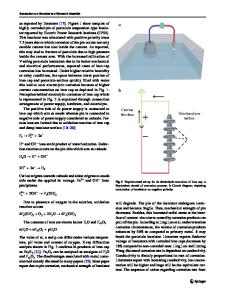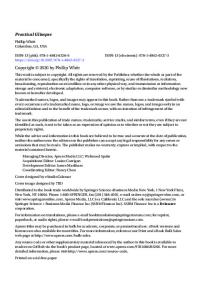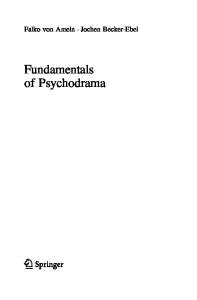An Overview of the Mechanical Properties of FeAl
- PDF / 416,144 Bytes
- 12 Pages / 612 x 792 pts (letter) Page_size
- 51 Downloads / 341 Views
1128-U02-01
An Overview of the Mechanical Properties of FeAl I. Baker Thayer School of Engineering, Dartmouth College, Hanover, NH 03755 ABSTRACT This paper presents an overview of the mechanical properties of the iron aluminide FeAl. Both the strength and ductility depend on a variety of parameters, including vacancy concentration, the environment (principally water vapor), alloy stoichiometry, temperature and grain size. The effects of alloying elements, particularly boron, are also briefly discussed. The review emphasizes how much of our current understanding of the strength and ductility of iron aluminides emanated from the discovery of the importance of both water vapor and thermal vacancies on these properties. INTRODUCTION Iron aluminides, i.e. Fe3Al, FeAl, FeAl2 Fe2Al5 and FeAl3, have been of interest for over 75 years [1]. This review focuses on B2 or ordered body-centered cubic compound FeAl, see Figure 1. The compound is appealing because of its outstanding oxidation resistance, good corrosion resistance, good strength up to ~700K and low density (~6000 kg m-3). Difficulties with this material finding commercial application include its lack of strength at high temperature, where it still shows excellent corrosion and oxidation resistance, and its poor low-temperature ductility, particularly with increasing aluminum content. This short review outlines the effects of a number of parameters, i.e. vacancy concentration, the environment, alloy stoichiometry, temperature, grain size and alloying elements, on the mechanical properties of FeAl. Additional details can be found in a number of other reviews [2-14]. Our understanding of the effects of these different parameters was only possible once the rôles of the environment and of vacancies on ductility and strength were understood. CRYSTAL STRUCTURE AND PHASE DIAGRAM FeAl exists over a wide range of iron-rich compositions at low temperature, e.g. at 473K from ~36.5-49.5 at. % Al, whereas aluminum-rich compositions exist only at elevated temperature, see Figure 2. Hyperstoichiometric compositions of the contiguous D03-structured compound Fe3Al disorder to the B2 structure at elevated temperatures that decrease with increasing aluminum content. Up to ~46 at. % Al, FeAl itself disorders to b.c.c. at increasing temperature with increasing aluminum content; binary alloys with greater aluminum concentrations appear to be ordered up to melting. The Young's modulus, E, of polycrystalline FeAl is not strongly dependent on composition, with values of typically 250 GPa for 40-49 Al [15], and decreases linearly with increasing temperature. As measured by Zener's parameter, A = 2 C44/(C11-C12), where Cij are the elastic stiffness constants, FeAl is moderately anisotropic: A decreases slightly with increasing Al concentration from 4.4 at Fe-35Al to 3.8 for Fe-40Al [16].
Al
Fe
Figure 1. The B2 structure adopted by FeAl, showing the and slip vectors. Figure 2. Iron-rich portion of the Fe-Al phase diagram. [17] POINT DEFECTS Anti-site atoms accommodate deviations from t
Data Loading...











